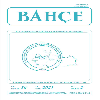Havran Siyah İncirinin (Ficus carica) Şeker ve Uçucu Aroma Bileşimi
Havran Siyah İnciri 2023 yılında coğrafi işaret almış, Balıkesir ili Havran ilçesinde yetişen mor-siyah renkli bir incirdir. Kendine özgü tatlı ve meyvemsi duyusal hisleri baskın olan bu incirin şeker bileşimi ve uçucu aroma bileşimi belirlenmiştir. Tatlı bir tada sahip olan bu incirin şeker bileşimini ağırlıklı olarak fruktoz (66.71 gL-1) ve glikoz (65.74 gL-1) oluşturmaktadır. Havran Siyah İncirinde meyvemsi duyusal hislerini uçucu aroma bileşenleri oluşturmaktadır. Bu meyvemsi duyusal hisler, alkoller ve esterler grubunda yer alan bileşenlerden kaynaklanmaktadır. Akol grubunda yer alan 3-metil-1-butanol ve 2-metil-1-bütanol bileşenler içerisinde en fazla oranda yer alırken, ester grubunda etil-2-metil bütirat baskın bileşen olarak tespit edilmiştir. Anahtar Kelimeler: Havran siyah inciri, şeker bileşimi, uçucu aroma bileşimi
Anahtar Kelimeler:
Havran siyah inciri, şeker bileşimi, uçucu aroma bileşimi
Sugar And Volatile Aroma Composition of Havran Siyah İncir
Havran Black Fig is a purple-black fig grown in Havran district of Balikesir province, which received geographical indication in 2023. Sugar composition and volatile aroma composition of this fig, which has its own sweet and fruity sensory feelings, were determined. The sugar composition of this fig, which has a sweet taste, mainly consists of fructose (66.71 gL-1) and glucose (65.74 gL-1). In Havran Black Fig, fruity sensory attributes are occured by volatile aroma components. These fruity attributes are related with alcohols and esters group present in fig. 3-methyl-1-butanol and 2-methyl-1-butanol in the alcohol group were the most common components, ethyl-2-methyl butyrate was the dominant component in the ester group.
Keywords:
Havran black fig, sugar composition, volatile aroma composition,
___
- Birleşmiş Milletler Gıda ve Tarım Örgütü (FAO) 2023. http://www.fao.org/faostat/en/ (Erişim Tarihi: 07.05.2023).
- Türkiye İstatistik Kurumu (TÜİK) 2023. https://tuik.gov.tr/ (Erişim Tarihi: 07.05.2023).
- Ayar, A., Seferoğlu, H.G., Belge, A. 2022. Sarılop incir klonlarının fenolojik gözlem verileri ve ağaç gelişim özellikleri yönünden değerlendirilmesi. Uluslararası Anadolu Ziraat Mühendisliği Bilimleri Dergisi 4(2):43-54.
- Gençdağ, E., Görgüç, A., Yılmaz, F.M. 2019. Kuru incirin işlenmesi, kalite problemleri ve gıda endüstrisinin geliştirdiği yenilikçi yöntemler. Akademik Gıda 17(3):378-388.
- Aksoy, U., Seferoglu, G., Misirli, A., Kara, S., Sahin, N., Bulbul, S., Duzbastilar, M. 1992. Selection of the table fig genotypes suitable for Egean region. In 1. Turkish National Horticultural Congress Proceedings 1:545-548.
- Çalişkan, O., Polat, A.A. 2008. Fruit characteristics of fig cultivars and genotypes grown in Turkey. Scientia Horticulturae 115(4):360-367.
- Aksoy, U., H.Z. Can, A. Mısırlı, S. Kara, G. Seferoglu, N. Sahin 2003. Fig (Ficus carica L.) selection study for fresh market in Western Turkey. Acta Hortic. 605:197-203
- Gozlekci, S. 2011. Pomological traits of fig (Ficus carica L) genotypes collected in the west Mediterranean region in Turkey. J. Anim. Plant Sci. 21:646-652.
- Simsek, E., Kilic, D., Caliskan, O. 2020. Phenotypic variation of fig genotypes (Ficus carica L.) in the Eastern Mediterranean of Turkey. Genetica 2020, 52:957-972.
- Kelebek, H., Diblan, S., Kadiroğlu, P., Kola, O., Selli, S. 2018. Kurutma işlemlerinin incirlerin (Ficus carica L.) fenolik bileşikler, antioksidan kapasite ve diğer önemli bazı kalite kriterleri üzerine etkileri. Çukurova Tarım ve Gıda Bilimleri Dergisi 33(2):127-136.
- Ercisli, S., Tosun, M., Karlidag, H., Dzubur, A., Hadziabulic, S., Aliman, Y. 2012. Color and antioxidant characteristics of some fresh fig (Ficus carica L.) genotypes from Northeastern Turkey. Plant Foods for Human Nutrition 67:271-276.
- Caliskan, O., Polat, A.A. 2012. Effects of genotype and harvest year on phytochemical and fruit quality properties of Turkish fig genotypes. Spanish Journal of Agricultural Research (4):1048-1058.
- Gozlekci, S., Kafkas, E., Ercisli, S. 2011. Volatile compounds determined by HS/GC-MS technique in peel and pulp of fig (Ficus carica L.) cultivars grown in Mediterranean region of Turkey. Notulae Botanicae Horti Agrobotanici Cluj-Napoca 39(2):105-108.
- Sertkaya, M., Guclu, G., Buyukkurt, O.K., Kelebek, H., Selli, S. 2021. GC-MS-Olfactometric screening of potent aroma compounds in pulps and peels of two popular Turkish fig (Ficus carica L.) cultivars by application of aroma extract dilution analysis. Food Analytical Methods 14(11):2357-2366.
- Çalişkan, O., Polat, A.A. 2011. Phytochemical and antioxidant properties of selected fig (Ficus carica L.) accessions from the eastern Mediterranean region of Turkey. Scientia Horticulturae 128(4):473-478.
- Teruel-Andreu, C., Sendra, E., Hernández, F., Cano-Lamadrid, M. 2022. How does cultivar affect sugar profile, crude fiber, macro-and micronutrients, total phenolic content, and antioxidant activity on Ficus carica leaves? Agronomy 13(1):30.
- Çalışkan, O., Polat, A.A. 2012. Bazı incir çeşitlerinin fitokimyasal ve antioksidan özelliklerinin belirlenmesi. Ege Üniversitesi Ziraat Fakültesi Dergisi 49(2):201-208.
- ISSN: 1300-8943
- Yayın Aralığı: Yılda 2 Sayı
- Başlangıç: 1968
- Yayıncı: Atatürk Bahçe Kültürleri Merkez Araştırma Enstitüsü
Sayıdaki Diğer Makaleler
Duygu CAYMAZ, Kazim GUNDUZ, Sedat SERÇE, Emine ÖZDEMİR
Struvit ve Bazı Ticari Gübrelerin Marulun Büyümesi Üzerindeki Etkinliklerinin Karşılaştırılması
İbrahim ERDAL, Rahma MEJRİ, Cennet YAYLACI, Şevkiye Armağan TÜRKAN
Yükseltinin Ferragnes ve Ferraduel Badem Çeşitlerinde Meyve Özelliklerine Etkisi
Yunus YILDIRIM, Nihal ACARSOY BİLGİN, Adalet MISIRLI
Mehmet Ali SARİDAS, Burcak KAPUR, Eser ÇELİKTOPUZ, Sevgi PAYDAŞ
Havran Siyah İncirinin (Ficus carica) Şeker ve Uçucu Aroma Bileşimi
